#Development help
Explore tagged Tumblr posts
Note
how to make a ghost...in android?
In theory, it is possible! Albeit in a limited form.
There is indeed an android baseware for ukagaka, called Ukagaka for Android. However, please note that this baseware is not fully compatible with many many ghosts. There are a lot of features in SSP that do not exist in Ukagaka for Android, and as of this writing the app was last updated in 2019. So, it may or may not be developed further.
However, you may have more luck if you're developing a ghost specifically for it, with all of its quirks in mind! If you can draw on your phone and write text files on your phone, then theoretically you can develop a ghost for this baseware entirely on your phone. The baseware is compatible with YAYA, so you should have no trouble using that as the coding language for your ghost.
I have personally used this app a few times, but I don't know that much about it. I know that I've had trouble with it not saving my progress in various ghosts, so unless you can figure out how to get that working, you may want to try making a style of ghost that isn't reliant on any sort of progression system (like a relationship system, etc.).
If you or anyone else learns more about this baseware and how to develop ghosts effectively for it, please do share! Although it may be more limited than SSP, having some simple ghosts available on android would be great, especially for folks that don't have a computer.
Good luck with it! If you need any help with the basics of developing a ghost, we can still help with that, so do get in touch!
#Ukagaka#English Ukagaka#Answered ask#Anonymous#Development help#Ukagaka for Android#Ukagaka Dream Team
24 notes
·
View notes
Text
When a Character Is Grieving Someone They Never Got to Say Goodbye To
✧ They talk about the person in past tense… then correct themselves. Then stop talking entirely.
✧ They touch things that belonged to the person like they’re fragile, sacred, about to disappear.
✧ They hoard the last voicemail, last message, last anything. Play it. Don’t play it. Just knowing it exists hurts enough.
✧ They leave something untouched, an empty seat, a half-packed bag, a coffee order that isn’t theirs.
✧ They get irrationally angry when someone else seems to be “moving on.” As if forgetting is betrayal.
✧ They don’t let themselves cry all at once. It comes in pieces. Like they’re afraid too much grief will drown them.
✧ They over-apologize. For being quiet. For being distant. For not being okay.
✧ They become hyper-aware of time, dates, anniversaries, time zones, the exact moment everything ended.
✧ They get superstitious. Ritualistic. As if doing things "right" might reverse something.
✧ They smile when they talk about the person. But it’s brittle. And it never quite touches their eyes.
#writing#writerscommunity#writer on tumblr#writing tips#writing advice#character development#writer tumblr#writblr#writing help#oc character#am writing#writeblr#writebrl#writer community#writer stuff#writer things#writers of tumblr#writing community
17K notes
·
View notes
Text
20 Ways to Show Extreme Fear in Your Writing
As I dive into researching signs of fear for my horror WIP, I wanted to share some of the most compelling and visceral reactions I’ve come across. Whether you’re writing a chilling scene or crafting a character’s panic, these 20 signs of fear can help bring tension and realism to your story.
Physical Reactions
Hyperventilating — sucking in air but never feeling like it’s enough
Chest tightens — feels like a weight or hands pressing down
Limbs shaking violently, knees buckling
Complete loss of muscle control — collapsing or unable to stand
Cold sweat soaking through clothes
Heart hammering so hard they feel it in their throat or head
Tunnel vision — the world narrowing down to one terrifying focal point
Ringing in the ears or sudden deafness, like the world drops away
Dizziness / feeling faint / vision blurring
Dry mouth — unable to speak or even scream
Uncontrollable Behavior
Screaming / sobbing / gasping — involuntary vocal outbursts
Panic run — bolting without thinking, tripping over everything
Clawing at their own skin / chest / throat — like trying to escape their body
Begging / pleading out loud even if no one’s there
Repeating words or phrases — “No, no, no” / “This isn’t happening”
Hiding instinctively — diving under tables, closets, or corners
Desperate grabbing — reaching for someone, anything solid
Loss of bladder or bowel control (for extreme terror)
Total mental shutdown — frozen, slack-jawed, staring blankly
Memory blackout — later can’t recall what happened during the worst moment
#writing tips#writing advice#character development#writers on tumblr#writeblr#creative writing#fiction writing#writerscommunity#writing#writing help#writing resources#horror writing#ai assisted
10K notes
·
View notes
Text
ultimate character development template
basics
name: meaning of name: nicknames/titles: age: gender: location: birthday: strengths + example where it's shown: weaknesses + example where it's shown: how it affects others:
emotional depth
attachment style + how it manifests in the story: physical fear: emotional/abstract fear: happy memory: sad memory: object of significance: philosophical outlook/belief: what characters are ignorant about themselves: how confident are they: goal: long-term dreams: what they're embarrassed/ashamed to tell others about: regrets: source of pride: source of misery: what they admire above all else: do they believe in fate:
personality
mbti: enneagram: big five: character archetype: star sign: who they pretend to be on the outside: who they actually are/how they feel towards the mask: mental health conditions: how it manifests for them: iq: eq: humour: reputation:
habits
bad habits: mannerisms when stressed: mannerisms when content: mannerisms when scared: mannerisms normally: verbal mannerisms/distinctive speaking style: how do they move across a room: what do they say and what remains unsaid: how they express love: hobbies:
appearance
defining features: eye shape + colour: hair texture + colour: skin texture + tone: vibe: height: build: clothing: any bodily disfigurement (scars, etc.): overall attractiveness: their opinion on their appearance: appeals to:
relationships
who they trust most: what they wish they could do for them: what's holding them back: who they hate most: what they wish they could do to them: what's holding them back: relationship with the protagonist: relationship with the antagonist: siblings: relationship with them: parents/step-parents: relationship with them: previous broken relationships: why did it break: what others expect of them: who believes in them: their mentor character/who they look up to: political/religious/other affiliations: what makes them different from every other character: non-human relationships + why: romantic "type" + why: relationship dynamics:
backstory/background
primary emotion towards their past: primary feelings while in their past: where did they grow up: defining incidents: earliest childhood memory: saddest memory: happiest memory: major accomplishments: their opinion on it: notable people in their backstory: effect on them today: trauma: what have they already lost: financial circumstance:
progression
why are they important (eg. why're they the only one able to do something?): what do they learn about themselves throughout the story: what do they learn about the world: how do they feel towards their newfound knowledge: character arc (positive, negative, neutral): how relationships change because of their actions: what mistakes do they make: what scene is their character highlighted: do they get what they want: why or why not: what happens to them after the story ends:
#character development#creative writing#writeblr#writing ideas#writing#writblr#character design#character description#character template#writing help#writing advice#character sheet#writerscommunity#writers on tumblr#writers and poets#writer stuff#ao3 writer
15K notes
·
View notes
Text
Writing Tips Master Post
Edit: Some posts may be deleted
Character writing/development:
Character Arcs
Making Character Profiles
Character Development
Comic Relief Arc
Internal Conflict
Character Voices
Creating Distinct Characters
Creating Likeable Characters
Writing Strong Female Characters
Writing POC Characters
Building Tension
Writing Grumpy x Sunshine Tropes
Writing Sexuality & Gender
Writing Manipulative Characters
Writing Mature Young Characters
Plot devices/development:
Intrigue in Storytelling
Enemies to Lovers
Alternatives to Killing Characters
Worldbuilding
Misdirection
Things to Consider Before Killing Characters
Foreshadowing
Narrative (+ how to write):
Emphasising the Stakes
Avoid Info-Dumping
Writing Without Dialogue
1st vs. 2nd vs. 3rd Perspective
Fight Scenes (+ More)
Transitions
Pacing
Writing Prologues
Dialogue Tips
Writing War
Writing Cheating
Writing Miscommunication
Writing Unrequited Love
Writing a Slow Burn Btwn Introverts
Writing Smut
Writing Admiration Without Attraction
Writing Dual POVs
Writing Unreliable Narrators
Worldbuilding:
Worldbuilding: Questions to Consider
Creating Laws/Rules in Fantasy Worlds
Book writing:
Connected vs. Stand-Alone Series
A & B Stories
Writer resources:
Writing YouTube Channels, Podcasts, & Blogs
Online Writing Resources
Outlining/Writing/Editing Software
Translation Software for Writing
Writer help:
Losing Passion/Burnout
Overcoming Writer's Block
Fantasy terms:
How To Name Fantasy Races (Step-by-Step)
Naming Elemental Races
Naming Fire-Related Races
How To Name Fantasy Places
Ask games:
Character Ask Game #1
Character Ask Game #2
Character Ask Game #3
Miscellaneous:
Writing Tips
Writing Fantasy
Miscommunication Prompts
Variety in Sentence Structure (avoiding repetition)
#masterlist#masterpost#writeblr#writing#writing tips#writing advice#writing help#writing resources#author resources#writer resources#creative writing#character writing#character development#plot development#narrative#book writing#writers block#writer stuff#writer things#fantasy writing#writer ask game#deception-united
29K notes
·
View notes
Text
GLOW UP GUIDE FOR 2025⠀

READ: On average, it takes more than 2 months before a new behavior becomes automatic — 66 days to be exact. And considering that 2025 is precisely these many days away, why not start with our glow up plan already?

Physical Glow Up-
BODY
— 5-10K steps a day.
— 7-8 hours of sleep.
— workout everyday for 1 hr atleast- yoga/stretching/pilates/cardio/lifting weights. a workout may take one hour, but your mood will be boosted for the next 12 hours.
— posture training.
— sunlight exposure after waking up for at least 10 minutes.
NUTRITION
— 2-3 liters of water every day.
— limit your caffeine intake.
— avoid sugars as much as you can.
— high protein diet, pre and probiotics.
— more fruits and veggies (+ green smoothies if you like).
— no junk/processed food/trans fat.
— no eating after 8 pm.
SKINCARE
— be clear on your skin type (oily, dry, combination, sensitive).
— once you're clear, use these accordingly- cleanser, toner, targeted serum, eye cream, moisturizer, sunscreen (≥50 spf).
— keep your bedding clean as well.
— no picking of skin on your lips, cuticle etc.
— gua sha to help improve blood circulation and lessen toxins.
— cold therapy may take three to five minutes of being uncomfortable, but your energy levels will be boosted for the rest of the day.
— remove makeup before you go to bed.
BODY CARE
— shower every day.
— exfoliate 2x a week.
— use body lotion (shea butter/aloe vera gel/coconut oil).
HAIR CARE
— wash hair 2-3x a week
— oil your scalp 2x a week, at least 3 hours before shampoo.
— hair mask 1x per week.
— never brush wet hair.
— use silk pillow case.
HYGIENE
— brush your teeth 2x a day, clean tongue and the roof of the mouth daily.
— floss daily.
— cut your nails 1x a week, never remove the cuticles.
— glycolic acid under arm for odor and discoloration.
— never use soap on your coochie.

Mental Glow Up-
MINDSET
— set clear goals- define and breakdown your aspirations.
— start your mornings with positive affirmations.
— surround yourself with uplifting content and people.
— be shamelessly selfish to your career and mental health, remove anyone or anything that doesn't align with your priorities and wellbeing.
— boost your brain health by these 4 neuroscience tools:
difficult first: start your day with the most difficult task (cortisol and dopamine are high in the body meaning that your body/mind is primed to work).
rest your eyes: introduce a micro-pause after learning by resting/closing your eyes - will help retain information better.
tomorrow's worries: write tomorrow's to-do list before bed as it is proven to be effective in helping you fall asleep.
find time to play: engage in low-stake play. can be anything you find fun but where the outcome doesn't matter (induces neuroplasticity + reduces stress).
MIND
— meditation might take as low as ten minutes, but your focus will be improved for the rest of the day.
— no social media after waking up and at least an hour before bed.
— keep aside 1 hr of time to read daily! reading a new book may take five hours, but you will keep the knowledge forever.
— journaling, gratitude.
— digital detox once a week or for 12 hours.
— limit unnecessary screentime, unfollow or cut off people you don't want to see.
JOURNALING
— choose a regular time each day to journal, making it a part of your routine.
— find a quiet, comfortable place free from distractions. light a candle if you want.
— allow your thoughts to flow without censoring or editing.
— write about your feelings and emotions to understand them better. write about things you are thankful for to boost your mood. write about your short-term and long-term goals. identify what triggers certain emotions or reactions
— set a timer for 5-10 minutes and write continuously during that time.
— reflect on both positive experiences and challenges.
— make lists, journal your thoughts on these questions.
— journal at night to clear your mind before bedtime, because emotions and thoughts lose their power once we acknowledge them.
— a gratitude practice may take five minutes, but your mindset will be shifted for the rest of the day.
AFFIRMATIONS
— customise affirmations to your needs.

Personal Life-
WEEKLY TASKS
— initiate small changes: begin with small, manageable tasks such as making your bed or cleaning your room every sunday.
— celebrate your success: reward yourself when you achieve your goals or have a consistently productive week. consider treats like buying flowers for yourself or watching your favorite show.
DAILY WORK
— set achievable goals: establish realistic goals for the day, week, or month ahead.
— track your progress.
— organise your work space, declutter your shelves etc.
— embrace the power of lists: keep a list of tasks to be done and their deadlines. this way, you start each day with a clear plan. to make it visually appealing and motivating, consider using productivity apps like evernote, habit tracker, or notion.
PRODUCTIVITY TIPS
— wake up early.
— plan ahead everything, do scheduling. you can use:
google calendar / notion / tasks .
— if the task takes less than 2 minutes to finish, do it immediately.
— countdown rule, if you are procrastinating, count 1-2-3-4-5 and jump.
— start slow, don't rush and try to do everything at one time.
— follow a proper routine, use app locks based on screentime.
— pomodoro technique, 25 min work, and 5 min break.
— schedule longer break times as well e.g 30 min nap.

#studyblr#mental health#self improvement#studyspo#psychology#self esteem#college#self love#self care#self worth#self help#self awareness#student#study#personal development#personal growth#philosophy#self confidence#university#spirituality#medblr#it girl#becoming her#becoming that girl#glow up#healing#therapy#study motivation#quotes#spiritualgrowth
10K notes
·
View notes
Text
youtube channels to motivate you this semester
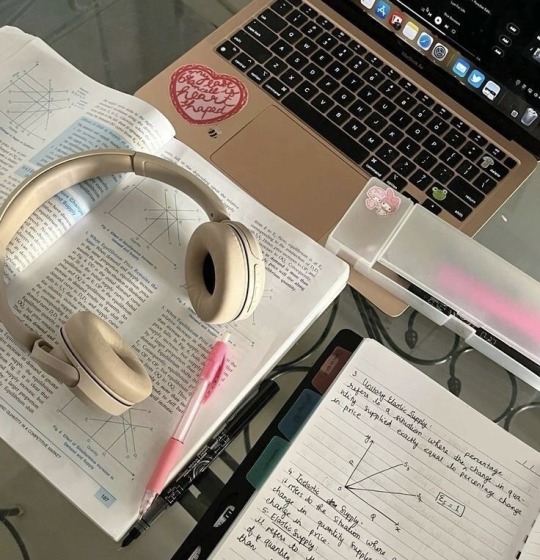

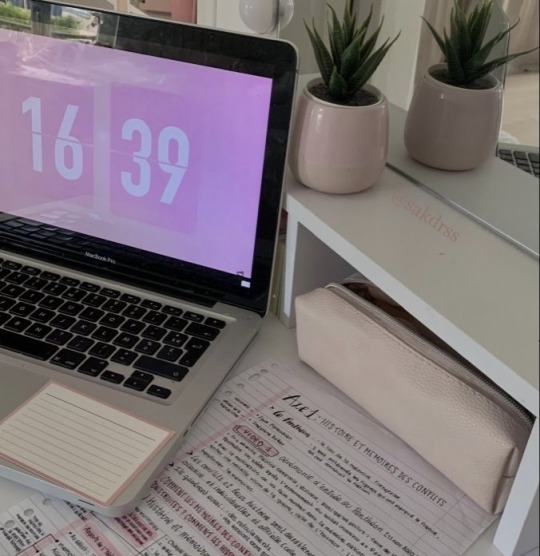
♡ abao in tokyo - study with me’s & playlists
♡ advika singh - study & productivity vlogs
♡ allie c. - medical school vlogs
♡ carrot td - study with me’s
♡ celine - study with me’s
♡ deaana - medical school, study with me’s, stationary, etc.
♡ dear mimi - study vlogs
♡ dia - medical student vlogs
♡ dr. rachel southard, do - medical school & residency vlogs & talks
♡ emily feng - medical school vlogs
♡ emilystudying - dental school & study vlogs
♡ emma grace - nursing school vlogs
♡ emmalilyn - study with me’s
♡ ginny - study vlogs
♡ hyobin - medical student vlogs
♡ leighton sanders - nursing vlogs
♡ lucky penny - study with me’s
♡ lunardazes. - uni study vlogs
♡ madi’s nursing journey - nursing school & nursing vlogs
♡ mango oatmilk - study with me’s
♡ maria silva - study & hospital interning vlogs
♡ merve - study with me’s
♡ mishujo - study & productive vlogs
♡ nada - study & productivity vlogs
♡ ray hon - study with me’s
♡ sab yang - medical school & study vlogs
♡ sean study - study with me’s
♡ sierra lyn - nursing vlogs
♡ studymd - study with me’s
♡ study to success - stationary, study with me’s, study hacks, etc.
♡ tani study - study with me’s
♡ yours truly, chloe - study vlogs
♡ yulma - study with me’s
#girlblog#girlblogger#girlblogging#that girl#dream girl#it girl#self care#self love#glow up#becoming that girl#self help#self improvement#self development#study#studying#studyblr#college#rory gilmore#study blog#studyspo#study aesthetic#study motivation#wonyoungism#study tips#study inspiration#studyinspo#hot girls read#paris geller#gilmore girls#clean girl
14K notes
·
View notes
Text

This came to me in a vision.
Feel free to add your own favorite "eldritch being x traumatized mortal" ships!

#billford#gravity falls#jarthur#private eyes#malevolent#malevolent podcast#symbrock#veddie#venom#this is so stupid help#but its actually so funny how the troupe of an eldritch being and a mortal share bodues and develop a love hate relationship happens a lot
7K notes
·
View notes
Text

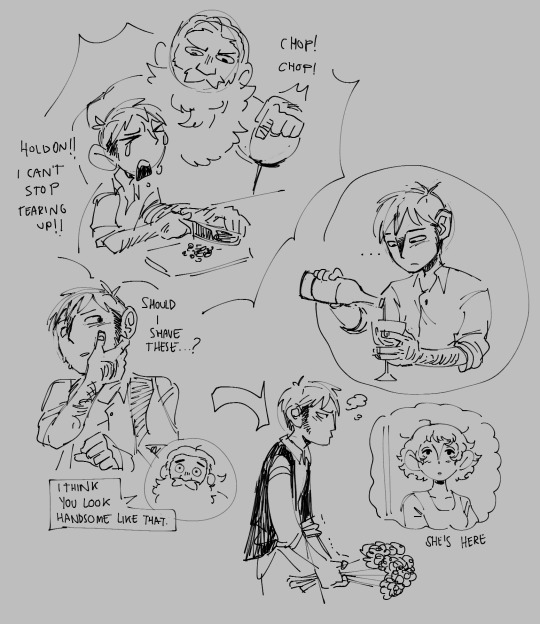
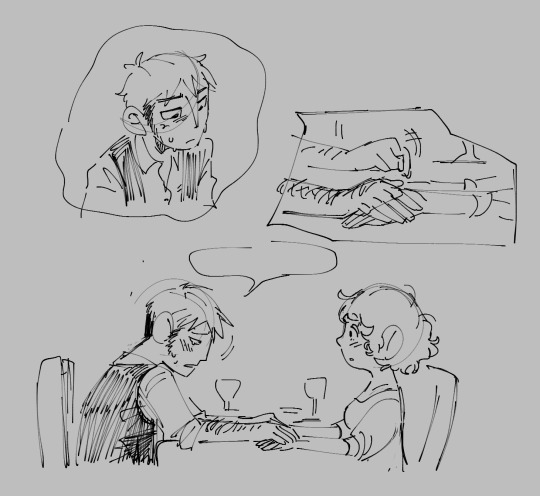
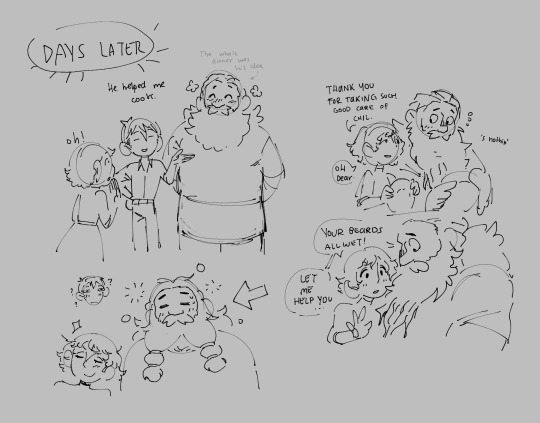
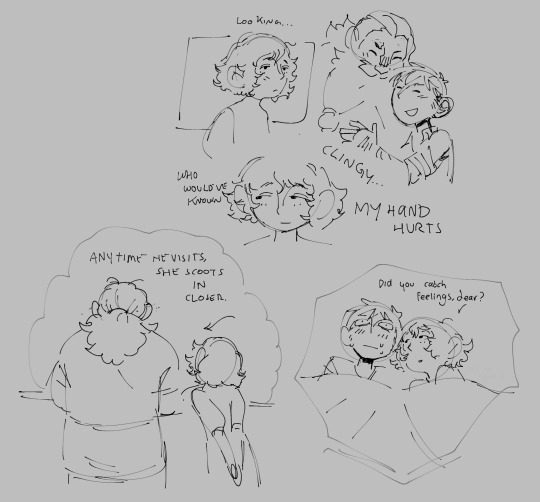
very sleep deprived doodles of whatever’s going on inside my brain
#my art#senshi#Chilchuck tims#Chilchucks wife#<- we call her whitbelle#whitbelle#chilshi#chilchuck sandwich#dungeon meshi#barely visible text says the following#(pointing at Senshi) ready to ruin things for himself because he wants to help his friend#(pointing at Chil) mcdumbass developed a crush on Senshi and is now afraid of letting him go despite wanting to reconcile with whitbelle#***the name whitbelle came from the fic Reelin’ In The Years by werewolf_gimmick on ao3 !!!
13K notes
·
View notes
Text
Small ways to activate your "happiness" chemicals
DOPAMINE: the reward chemical
• Complete a task
• Doing self care activites
• Eating some food
• Celebrating your little wins.
OXYTOCIN: the love hormones
• Playing with a dog
• Playing with a baby
• Holding hands
• Hugging someone
• Giving someone else a compliment
SEROTONIN: the mood stabiliser
• Meditating
• Running
• Be in the sun
• Walk in nature
• Swimming
ENDORPHIN: the pain relief
• Laughing exercises
• Essential oils
• Eating dark chocolate
• Running
#inspiration#self love#motivation#self care#self help#self improvement#glow up#becoming that girl#glow up era#manifesation#self confidence#self awareness#self development#personal growth#self growth#growth mindset#growth#positive mindset
18K notes
·
View notes
Text
Zoom In, Don’t Glaze Over: How to Describe Appearance Without Losing the Plot
You’ve met her before. The girl with “flowing ebony hair,” “emerald eyes,” and “lips like rose petals.” Or him, with “chiseled jawlines,” “stormy gray eyes,” and “shoulders like a Greek statue.”
We don’t know them.
We’ve just met their tropes.
Describing physical appearance is one of the trickiest — and most overdone — parts of character writing. It’s tempting to reach for shorthand: hair color, eye color, maybe a quick body scan. But if we want a reader to see someone — to feel the charge in the air when they enter a room — we need to stop writing mannequins and start writing people.
So let’s get granular. Here’s how to write physical appearance in a way that’s textured, meaningful, and deeply character-driven.
1. Hair: It’s About Story, Texture, and Care
Hair says a lot — not just about genetics, but about choices. Does your character tame it? Let it run wild? Is it dyed, greying, braided, buzzed, or piled on top of her head in a hurry?
Good hair description considers:
Texture (fine, coiled, wiry, limp, soft)
Context (windblown, sweat-damp, scorched by bleach)
Emotion (does she twist it when nervous? Is he ashamed of losing it?)
Flat: “Her long brown hair framed her face.”
Better: “Her ponytail was too tight, the kind that whispered of control issues and caffeine-fueled 4 a.m. library shifts.”
You don’t need to romanticise it. You need to make it feel real.
2. Eyes: Less Color, More Connection
We get it: her eyes are violet. Cool. But that doesn’t tell us much.
Instead of focusing solely on eye color, think about:
What the eyes do (do they dart, linger, harden?)
What others feel under them (seen, judged, safe?)
The surrounding features (dark circles, crow’s feet, smudged mascara)
Flat: “His piercing blue eyes locked on hers.”
Better: “His gaze was the kind that looked through you — like it had already weighed your worth and moved on.”
You’re not describing a passport photo. You’re describing what it feels like to be seen by them.
3. Facial Features: Use Contrast and Texture
Faces are not symmetrical ovals with random features. They’re full of tension, softness, age, emotion, and life.
Things to look for:
Asymmetry and character (a crooked nose, a scar)
Expression patterns (smiling without the eyes, habitual frowns)
Evidence of lifestyle (laugh lines, sun spots, stress acne)
Flat: “She had a delicate face.”
Better: “There was something unfinished about her face — as if her cheekbones hadn’t quite agreed on where to settle, and her mouth always seemed on the verge of disagreement.”
Let the face be a map of experience.
4. Bodies: Movement > Measurement
Forget dress sizes and six packs. Think about how bodies occupy space. How do they move? What are they hiding or showing? How do they wear their clothes — or how do the clothes wear them?
Ask:
What do others notice first? (a presence, a posture, a sound?)
How does their body express emotion? (do they go rigid, fold inwards, puff up?)
Flat: “He was tall and muscular.”
Better: “He had the kind of height that made ceilings nervous — but he moved like he was trying not to take up too much space.”
Describing someone’s body isn’t about cataloguing. It’s about showing how they exist in the world.
5. Let Emotion Tint the Lens
Who’s doing the describing? A lover? An enemy? A tired narrator? The emotional lens will shape what’s noticed and how it’s described.
In love: The chipped tooth becomes charming.
In rivalry: The smirk becomes smug.
In mourning: The face becomes blurred with memory.
Same person. Different lens. Different description.
6. Specificity is Your Superpower
Generic description = generic character. One well-chosen detail creates intimacy. Let us feel the scratch of their scarf, the clink of her earrings, the smudge of ink on their fingertips.
Examples:
“He had a habit of adjusting his collar when he lied — always clockwise, always twice.”
“Her nail polish was always chipped, but never accidentally.”
Make the reader feel like they’re the only one close enough to notice.
Describing appearance isn’t just about what your character looks like. It’s about what their appearance says — about how they move through the world, how others see them, and how they see themselves.
Zoom in on the details that matter. Skip the clichés. Let each description carry weight, story, and emotion. Because you’re not building paper dolls. You’re building people.
#writeblr#writing community#writers of tumblr#writing tips#character development#creative writing#writing advice#character description#descriptive writing#show don't tell#world building#narrative voice#writing help#fiction writing#amwriting#writing characters
3K notes
·
View notes
Text
Emotional Walls Your Character Has Built (And What Might Finally Break Them)
(How your character defends their soft core and what could shatter it) Because protection becomes prison real fast.
✶ Sarcasm as armor. (Break it with someone who laughs gently, not mockingly.) ✶ Hyper-independence. (Break it with someone who shows up even when they’re told not to.) ✶ Stoicism. (Break it with a safe space to fall apart.) ✶ Flirting to avoid intimacy. (Break it with real vulnerability they didn’t see coming.) ✶ Ghosting everyone. (Break it with someone who won’t take silence as an answer.) ✶ Lying for convenience. (Break it with someone who sees through them but stays anyway.) ✶ Avoiding touch. (Break it with accidental, gentle contact that feels like home.) ✶ Oversharing meaningless things to hide real depth. (Break it with someone who asks the second question.) ✶ Overworking. (Break it with forced stillness and the terrifying sound of their own thoughts.) ✶ Pretending not to care. (Break it with a loss they can’t fake their way through.) ✶ Avoiding mirrors. (Break it with a quiet compliment that hits too hard.) ✶ Turning every conversation into a joke. (Break it with someone who doesn’t laugh.) ✶ Being everyone’s helper. (Break it when someone asks what they need, and waits for an answer.) ✶ Constantly saying “I’m fine.” (Break it when they finally scream that they’re not.) ✶ Running. Always running. (Break it with someone who doesn’t chase, but doesn’t leave, either.) ✶ Intellectualizing every feeling. (Break it with raw, messy emotion they can’t logic away.) ✶ Trying to be the strong one. (Break it when someone sees the weight they’re carrying, and offers to help.) ✶ Hiding behind success. (Break it when they succeed and still feel empty.) ✶ Avoiding conflict at all costs. (Break it when silence causes more pain than the truth.) ✶ Focusing on everyone else’s healing but their own. (Break it when they hit emotional burnout.)
#writer on tumblr#writing tips#writing advice#character development#writer tumblr#writblr#writing help#writing#writerscommunity#am writing#tumblr writing community#on writing#writeblr#writer community#writer problems#writer things#writer stuff#writer#writerslife#writing life#writing inspiration
19K notes
·
View notes
Text
20 Compelling Positive-Negative Trait Pairs
Here are 20 positive and negative trait pairs that can create compelling character dynamics in storytelling:
1. Bravery - Recklessness: A character is courageous in the face of danger but often takes unnecessary risks.
2. Intelligence - Arrogance: A character is exceptionally smart but looks down on others.
3. Compassion - Naivety: A character is deeply caring but easily deceived due to their trusting nature.
4. Determination - Stubbornness: A character is persistent in their goals but unwilling to adapt or compromise.
5. Charisma - Manipulativeness: A character is charming and persuasive but often uses these traits to exploit others.
6. Resourcefulness - Opportunism: A character is adept at finding solutions but is also quick to exploit situations for personal gain.
7. Loyalty - Blind Obedience: A character is fiercely loyal but follows orders without question, even when they're wrong.
8. Optimism - Denial: A character remains hopeful in difficult times but often ignores harsh realities.
9. Humor - Inappropriateness: A character lightens the mood with jokes but often crosses the line with their humor.
10. Generosity - Lack of Boundaries: A character is giving and selfless but often neglects their own needs and well-being.
11. Patience - Passivity: A character is calm and tolerant but sometimes fails to take action when needed.
12. Wisdom - Cynicism: A character has deep understanding and insight but is often pessimistic about the world.
13. Confidence - Overconfidence: A character believes in their abilities but sometimes underestimates challenges.
14. Honesty - Bluntness: A character is truthful and straightforward but often insensitive in their delivery.
15. Self-discipline - Rigidity: A character maintains strong control over their actions but is inflexible and resistant to change.
16. Adventurousness - Impulsiveness: A character loves exploring and trying new things but often acts without thinking.
17. Empathy - Overwhelm: A character deeply understands and feels others' emotions but can become overwhelmed by them.
18. Ambition - Ruthlessness: A character is driven to achieve great things but willing to do anything, even unethical, to succeed.
19. Resilience - Emotional Detachment: A character can endure hardships without breaking but often seems emotionally distant.
20. Strategic - Calculative: A character excels at planning and foresight but can be cold and overly pragmatic in their decisions.
These pairs create complex, multi-dimensional characters that can drive rich, dynamic storytelling.
---
+ If you find my content valuable, consider Support This Blog on Patreon!
#writing tips#writing advice#character development#writers on tumblr#writeblr#creative writing#fiction writing#writerscommunity#writing#writing help#writing resources#ai assisted
22K notes
·
View notes
Text
Hey hey hey writers!!! Especially y'alls who are struggling to develop character or have white room/still character syndrome!!!
Look into Uta Hagen's acting techniques, specifically her 9 questions. I'm not kidding. She built off Stanislavski's techniques to help actors develop their characters and roles & bring that to the stage- specifically, and this is why I'm pushing Hagen specifically and not anyone else, their relationship with the set, props, other characters, setting (yes that's different from set), history and the play's plot, and how that changes how they act and speak. I have my textbook open I'll take some pictures.


If you need a transcript/image description I'll put it under the cut, they're a little blurry cause I'm bad at holding my phone... I know alt text is a thing but I don't want y'alls to have to scroll through a tiny box lmao.
[Image 1 alt text]
The lower part of a textbook page. The text reads:
Uta Hagen's acting exercises
[Out-of-transcript note: Most of these, with the exception of Three Entrances, are less useful in terms of writers, but you could make it work, especially for roleplay.]
Basic Object Exercise: Sometimes called "two minutes of daily life," this exercise requires the actor to replicate activities from their own daily routine in specific detail (think making breakfast or getting ready to go out). The goal of this exercise is to increase the actor's awareness of their un-observed behaviour.
Three Entrances: Starting offstage, the actor enters the environment of the scene. The actor's performance should answer three questions: What did I just do? What am I going to do? What is the first thing I want?
Immediacy: Hagen asked actors to search for a small object that they need. You can perform the exercise on a set or in your home. As you search, you should observe the behaviour and thoughts that arise as you authentically try to find something. The objective is to identify the thoughts, behaviours, and sensations you experience when you genuinely don't know the outcome, so you can use them on stage.
Fourth Side: This exercise starts with a phone call to a person you know. You should call them with a specific objective in mind. During the convention, Hagen wants you to focus on your surroundings and the specific objects that your eyes rest on. The purpose is to help actors observe how they interact with all dimensions of an enclosed physical space so they can recreate privacy on stage.
Endowment: this exercise is designed to help actors apply their observed behaviours to endow props with qualities that they cannot safely have on stage. Hot irons and sharp knives are typical examples. The Endowment excercise asks actors to believably treat objects on stage as though they have the qualities the actor needs in a scene.
Uta Hagen's exercises are her greatest gift to actors working today. She developed them between Broadway jobs to solve some acting problems she had never seen anyone tackle to her satisfaction. The result is that Hagen's exercises give actors a way to observe human behaviours and catalogue it so they can recall it onstage when useful in a role.
[Image 1 alt text end]
[Image 2 alt text]
Most of a textbook page. The image cuts off about 3 quarters of the way down the page. The text reads:
Uta Hagen's 9 Questions
Who am I? This question's answer includes all relevant details from name and age to physical traits, education, and beliefs.
What time is it? Depending on the scene, the most relevant measure of time can be the era, the season, the day, or even the specific minute.
Where am I? This answer covers the country, town, neighbourhood, room, or even the specific part of the room.
What surrounds me? Characters can be surrounded by anything from weather to furnishings, landscape or people.
What are the given circumstances? Given circumstances include what has happened, what is happening and what will happen to a character.
What are my relationships? Relationships can be with the other characters in the play, inanimate objects, or even recent events.
What do I want? Wants can be what the character desires in the moment, or in the overall course of the play. [Out-of-transcript note: I recommend figuring out both for writing, the former multiple times for whenever it changes! Outside of Hagen's technique, we call it objective and superobjective.]
What is in my way? This is the actor's chance to understand the obstacles the character must react to and overcome.
What do I do to get what I want? In Hagen's teaching, "do" means physical action.
Uta Hagen's nine questions help actors develop the granular details of their character's backstory. The questions come from Hagen's first book, "Respect for Acting," though in her later book, "A Challenge for the Actor," she condensed her original nine questions into six steps.
Uta Hagen's revised six steps to building a character are:
Who am I?
What are the circumstances?
What are my relationships?
What do I want?
What is my obstacle?
What do I do to get what I want?
Later in her life, Hagen distances herself from her first book and encouraged her students to rely on her second book, which she felt was clearer about her concepts. Both books are popular with acting teachers and students today, however. Hagen's questions and steps are the foundation for all of her acting exercises. Whether you rely on the nine questions or the six steps depends on personal preference.
[Image 2 alt text end]
Personally I like the 9 questions more, but like the book says, personal preference! So yeah, if you're a writer, try some of these out for your characters. :]
#writers on tumblr#writers of tumblr#creative writing#writing encouragement#writing help#writing tips#character development
2K notes
·
View notes
Text
💀 Making Your Villain Make Sense (Without Making Them Right™)
("because if I see one more war criminal with a sad diary entry get a redemption arc, I’m gonna throw my laptop.")
Here’s the thing: your villain doesn’t need to be redeemable. But they do need to make sense.
And I mean sense beyond "they’re evil and they monologue about it." Or “they have a tragic past, so now they do murder <3.” Or “they were right all along, the hero just couldn’t see it 🥺.”
Let’s fix that.
─────── ✦ ───────
🧠 STEP ONE: BUILD A LOGIC SYSTEM THAT ISN’T OURS Your villain shouldn’t just be wrong, they should have their own internal system that works for them. Morally flawed? Absolutely. But coherent.
Ask yourself:
What do they value more than anything? (Power? Order? Loyalty? Vengeance?)
What do they believe about the world, and how did they get there?
What fear drives them? What future do they think they’re trying to prevent?
The villain doesn’t need to know they’re wrong. But you should.
Make their logic airtight. even if it’s awful. Give them cause and effect.
─────── ✦ ───────
👿 STEP TWO: STOP GIVING THEM THE BETTER IDEOLOGY Listen. I love a “morally gray” moment as much as anyone. But if your villain is making all the good points and the hero’s just like “no because that’s mean,” your arc is upside down.
If your villain is critiquing injustice, oppression, or inequality, make sure their methods are the problem, not their entire worldview.
✖︎ WRONG: Villain: “The ruling class is corrupt.” Hero: “That’s not nice.”
✔︎ RIGHT: Villain: “The ruling class is corrupt, so I’m burning the city and everyone in it.” Hero: “So you’re just… committing genocide now?”
Your villain can touch a real issue. Just don’t let them be the only one talking about it, or solving it with horror movie logic.
─────── ✦ ───────
🔪 STEP THREE: GIVE THEM POWER THAT COSTS THEM The best villains lose things too. They’re not just untouchable horror dolls in sexy coats. They make bad choices and pay for them. That’s where the drama lives.
Examples:
They isolate themselves.
They sacrifice people they love.
They get what they want, and it destroys them.
They know they’re the monster, and choose it anyway.
If your villain can kill a dozen people and feel nothing, that’s not scary. That’s boring. Let them bleed. Let them regret it. Let them double down anyway.
─────── ✦ ───────
🧱 STEP FOUR: MAKE THEM PART OF THE WORLD, NOT OUTSIDE IT Villains shouldn’t feel like they were patched in from another genre. They should be part of the world’s logic, culture, class system, history. They should reflect something about the setting.
Villains that slap:
The advisor who upheld the regime until they decided they deserved to rule.
The noble who’s using war to reclaim stolen legacy.
The ex-hero who thinks the system can’t be saved, only reset.
The priest who truly believes the gods demand blood.
They’re not just evil, they’re a product of the same world the hero is trying to save.
─────── ✦ ───────
👁 STEP FIVE: SHOW US THEIR SELF-JUSTIFICATION You don’t need a tragic backstory™. But you do need to show us why they think they’re right. Not just with exposition, through action.
Let us watch them:
Protect someone.
Choose their goal over safety.
Justify the unjustifiable to a character who loves them.
Refuse to change, even when given a chance.
A villain who looks into the mirror and goes “Yes. I’m correct.” is 1000x scarier than one who sobs into a journal and says “I’m so broken 🥺.”
─────── ✦ ───────
🧨 BONUS ROUND: DON’T MAKE THEM A HATRED MEGAPHONE Especially if you’re writing marginalized characters: don’t let your villain become a mouthpiece for slurs, abuse, or extremism just to make them “evil enough.” That’s lazy. And harmful.
You don’t need real-world hate speech to build a dark character. You need power, consequence, and intent.
─────── ✦ ───────
TL;DR: Good villains don’t need to be right. They need to be real. Not a vibe. Not a sad boy in a trench coat. Not a trauma monologue and then a sword fight. They need logic. They need cost. They need to scare you because you get them, and still want them to lose.
Make them dangerous. Not relatable. Make them whole. Not wholesome. Make them make sense.
—rin t. // thewriteadviceforwriters // villain critic. final boss consultant. licensed chaos goblin
P.S. I made a free mini eBook about the 5 biggest mistakes writers make in the first 10 pages 👀 you can grab it here for FREE:
#writeblr#writing advice#writing help#writing community#fiction writing#writers on tumblr#writing resources#writing tips#character writing#writing villains#writing characters#creative writing#novel writing#how to write villains#thewriteadviceforwriters#villain writing#villain arcs#how to write a villain#writing antagonists#antagonist development#dark character writing#morally gray characters#complex villains#realistic villains#story conflict#character arcs#character development tips#on writing#writing#writers block
2K notes
·
View notes